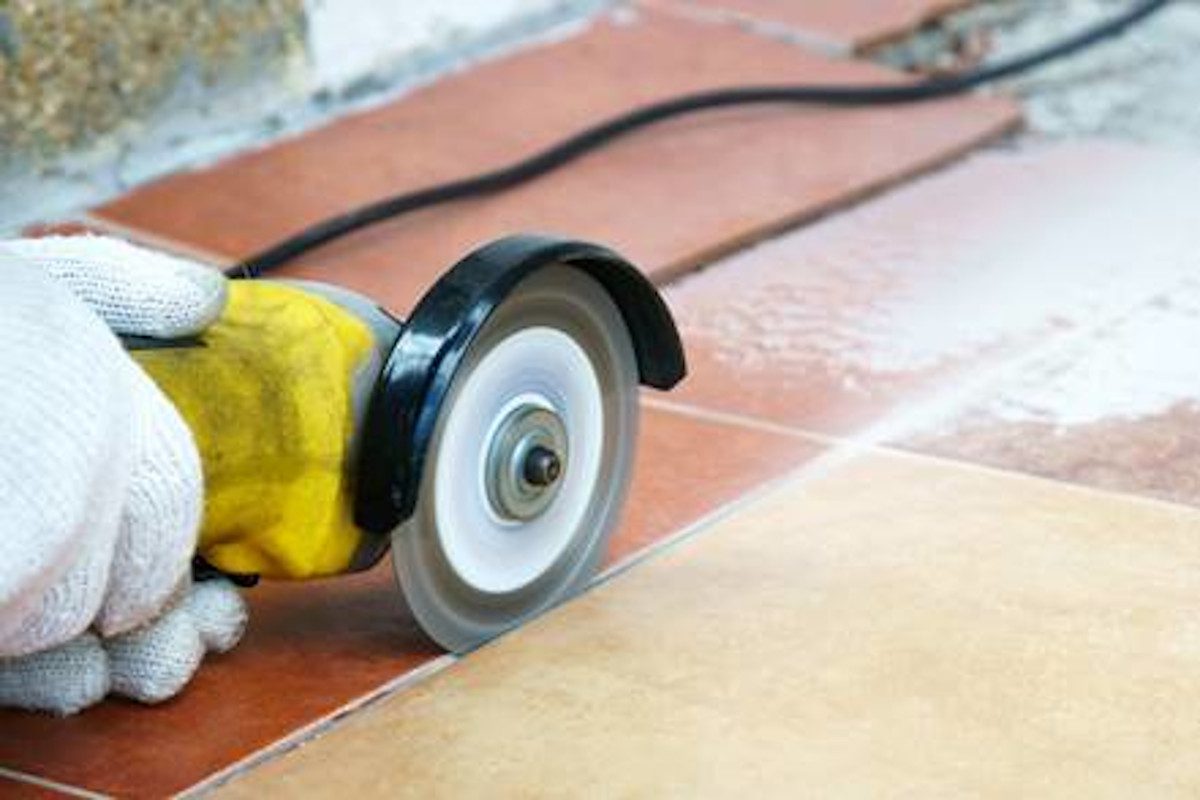
When working with slate and tiles, certain construction activities are known to produce high levels of crystalline silica dust which, if not monitored and controlled, can lead to a range of chronic respiratory conditions. With an estimated 600,000 workers in the UK exposed to silica dust each year, and an average of 600 silica-related deaths per annum, it is imperative for organisations to understand the health risks associated with slate and tile cutting and how best to protect their workers against the harmful effects of silica. The following Q&A from SOCOTEC, a firm offering testing, inspection and compliance services, aims to offer clarity and dispel misconceptions.
What is RCS and where can it be found?
Silica is a natural substance found in many types of stone, sand and clay – including bricks, concrete, slate and tiles – and occurs in both crystalline (including quartz, cristobalite and tridymite) and non-crystalline (or amorphous) forms. The approximate crystalline silica content within each material varies considerably, with tiles containing 30-45%, slate 20-40%, brick up to 30% and concrete 25-70%. Respirable crystalline silica (RCS) may be generated when these materials are fractured through cutting, mining, blasting, drilling and polishing.
How is RCS released during slate and tile cutting?
High levels of crystalline silica dust are released when cut-off saws are used to cut roof slate and tiles, and this applies regardless of the size of the material or the length of time that it is cut for. There is a considerable risk to workers who inhale excessive quantities of RCS over an extended period of time – for example, when packing and stacking slates after they have been split and dressed.
As well as being released through cutting, exposure to respirable crystalline silica can also take place long after the work has been completed. Dust tends to settle on worktops and clothing and become airborne again following sudden movement, such as dry sweeping or brushing or as a result of a leak or spillage. This makes it incredibly easy to inhale crystalline silica via secondary exposure, as even if workers are located outside of the cutting area, they can still come to harm by inhaling newly disturbed airborne dust.
What are the health risks associated with RCS exposure?
The health risks associated with exposure to crystalline silica were noted as long ago as the 1700s, when evidence of silicosis was first discovered in stone cutters. Silica dust is only dangerous if it is disturbed and subsequently inhaled, with the potential to cause life-threatening respiratory conditions such as silicosis, lung cancer and chronic obstructive pulmonary disease. Many of these conditions do not show symptoms until many years after initial exposure and can even lead to fatality if lung capacity is compromised.
When crystalline silica dust is inhaled into the lungs, the body’s natural defence cells and immune system is attacked, reducing the ability of the lungs to transfer oxygen into the blood supply and causing inflammation and scar tissue formation. RCS can remain in the lungs for many years, and as it builds, increases the likelihood of a chronic respiratory condition.
Which industries/employees can be affected by RCS?
Exposure to crystalline silica largely affects those working within the construction and engineering industries where regular working activities such as cutting, drilling, grinding, crushing and polishing are known to produce dust. This includes but is by no means limited to those working within roofing, brickmaking, foundry work, masonry, tunnelling, demolition, pottery/ceramics, quarrying, mining and concrete manufacturing.
What legislation is in place to protect workers against RCS exposure?
According to the Control of Substances Hazardous to Health (COSHH) Regulations, employers are legally required to prevent or, where not reasonably practicable, adequately control exposure to substances hazardous to health, which includes respirable crystalline silica. As a result, employers must implement effective control measures that are directly proportionate to the risk to health, all of which must be regularly monitored and maintained at all times. Employees who may come into contact with RCS must also be provided with sufficient training and information to ensure they are adequately protected against silica exposure.
What is the current WEL for RCS and is it classed as carcinogenic?
While the current Workplace Exposure Limit (WEL) for RCS is currently 0.1 mg/m3, a group of MPs have called for the WEL to be reduced from 0.1 mg/m3 to 0.05 mg/m3 over an eight-hour time weighted average, which would place it in line with the recommended exposure standards from the Scientific Committee on Occupational Exposure Limits (SCOEL). This is a result of increased health risks being seen at low levels of exposure, including at or below the current UK limit of 0.1 mg/m3.
RCS was also recently classified as a carcinogen in the HSE’s Updates to EH40/2005 Workplace Exposure Limits guidance document, specifically in cases where it is generated as a result of a work process. This means that RCS is deemed capable of causing cancer and/or heritable genetic damage. As such, according to COSHH regulations, exposure to RCS must now be reduced to as low as reasonably practicable (ALARP).
For more information on the Updates to EH40/2005 Workplace Exposure Limits, click here.
What control measures can employers implement to protect their workers from RCS exposure?
There are a variety of preventative measures and procedures that organisations can implement to protect their workers against RCS, including:
· Using engineering controls such as enclosures, hoods and other types of Local Exhaust Ventilation (LEV)
· Applying wet methods of cutting, chipping, drilling, sawing and grinding to eliminate or minimise dust creation
· Using a handheld cut-off saw with a water suppression attachment connected to a pressurised water container
· Douse equipment with water during the clean-up process and debris removal
· Avoiding high pressure spraying, brushing and sweeping that could disturb silica dust
· Where engineering controls are not reasonably practicable, wearing, storing and maintaining the correct Respiratory Protective Equipment (RPE) – an FFP3 disposable dust mask or half mask with P3 filters, all of which must be face-fit tested
· Replacing seals and worn cutting discs when necessary
· Employing dust extraction equipment in dedicated workspaces
· Using covered chutes and skips/screening off areas to prevent the spread of dust
· Creating space for a dedicated, well-ventilated cutting area (control rooms, barriers and enclosures) and limiting the number of people who can access the workspace
Substitution of silica-containing materials with a lower RCS content or eliminating silica-based substances completely is also an effective option to reduce the level of exposure, although this is not always viable. Specifying half or bespoke sized tile sizes from manufacturers at the building design stage may also reduce the need for cutting by construction workers. Additional care should also be taken when cleaning any work related dusts. Dry sweeping should be avoided and replaced with vacuuming or wet cleaning methods where possible.
How can I monitor levels of RCS exposure?
Only a small amount of crystalline silica dust is required for workers to contract respiratory conditions, which is why the HSE requires employers to monitor dust levels and ensure that exposures remain as low as reasonable practicable (ALARP) while also being below the current Workplace Exposure Level of 0.1 mg/m3 over an eight-hour time weighted average (TWA).
Employers are required to regularly monitor exposure levels in order to ensure that any control measures such as LEV or even RPE are working effectively. Exposure monitoring can be carried out with personal dust sampling equipment, and samples of respirable dust can then be further analysed for crystalline silica for the most accurate measure of exposure. Where there is a risk that workers may develop silicosis and other respiratory conditions, employers are recommended to introduce health surveillance, which will allow for the early identification of occupational health effects and identification of appropriate control measures.
How can SOCOTEC help?
Sampling and analysing approximately 6,000 RCS samples each year, SOCOTEC’s Occupational Hygiene team is fully equipped to provide organisations of all sizes and sectors with the knowledge required to assess and control the level of risk in their workplace. In addition, for those wanting to learn the practical skills required to safely operate mounting disc cutters and other abrasive equipment associated with crystalline silica exposure, SOCOTEC also offers a dedicated in-house Abrasive Wheels training course, which can be accessed here.
If you would like to find out more about SOCOTEC’s range of occupational hygiene services and how they can support your organisation, click here.






